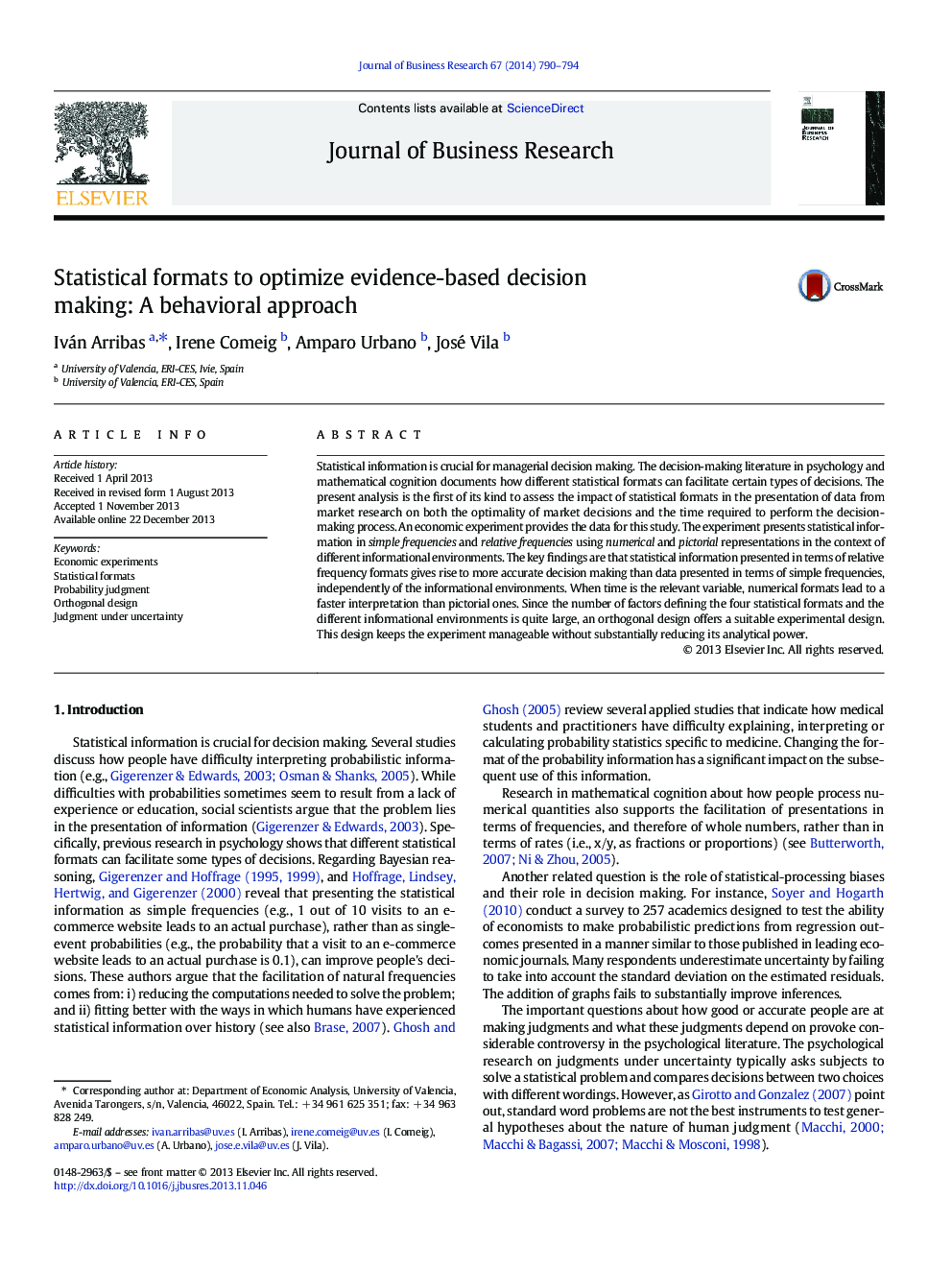| Article ID | Journal | Published Year | Pages | File Type |
|---|---|---|---|---|
| 1017821 | Journal of Business Research | 2014 | 5 Pages |
Statistical information is crucial for managerial decision making. The decision-making literature in psychology and mathematical cognition documents how different statistical formats can facilitate certain types of decisions. The present analysis is the first of its kind to assess the impact of statistical formats in the presentation of data from market research on both the optimality of market decisions and the time required to perform the decision-making process. An economic experiment provides the data for this study. The experiment presents statistical information in simple frequencies and relative frequencies using numerical and pictorial representations in the context of different informational environments. The key findings are that statistical information presented in terms of relative frequency formats gives rise to more accurate decision making than data presented in terms of simple frequencies, independently of the informational environments. When time is the relevant variable, numerical formats lead to a faster interpretation than pictorial ones. Since the number of factors defining the four statistical formats and the different informational environments is quite large, an orthogonal design offers a suitable experimental design. This design keeps the experiment manageable without substantially reducing its analytical power.
